I'm not entirely sure I have understood what your asking (so apologies), but if I have then perhaps this might help...
It seems that for insideOfFrustum to work correctly, that their must be some SCNGeometry associated with the node for it to work (an SCNNode alone will not suffice).
For example if we do something like this in the delegate callback and save the added SCNNode into an array:
func renderer(_ renderer: SCNSceneRenderer, didAdd node: SCNNode, for anchor: ARAnchor) {
//1. If Out Target Image Has Been Detected Than Get The Corresponding Anchor
guard let currentImageAnchor = anchor as? ARImageAnchor else { return }
//2. Print The Anchor ID & It's Associated Node
print("""
Anchor With ID Has Been Detected \(currentImageAnchor.identifier)
Associated Node Details = \(node)
""")
//3. Store The Node
imageTargets.append(node)
}
And then use the insideOfFrustum method, 99% of the time it will say that the node is in view even when we know it shouldn't be.
However if we do something like this (whereby we create a transparent marker node e.g. one that has some geometry):
func renderer(_ renderer: SCNSceneRenderer, didAdd node: SCNNode, for anchor: ARAnchor) {
//1. If Out Target Image Has Been Detected Than Get The Corresponding Anchor
guard let currentImageAnchor = anchor as? ARImageAnchor else { return }
//2. Print The Anchor ID & It's Associated Node
print("""
Anchor With ID Has Been Detected \(currentImageAnchor.identifier)
Associated Node Details = \(node)
""")
//3. Create A Transpanrent Geometry
node.geometry = SCNSphere(radius: 0.1)
node.geometry?.firstMaterial?.diffuse.contents = UIColor.clear
//3. Store The Node
imageTargets.append(node)
}
And then call the following method, it does detect if the ARReferenceImage is inView:
func renderer(_ renderer: SCNSceneRenderer, updateAtTime time: TimeInterval) {
//1. Get The Current Point Of View
guard let pointOfView = augmentedRealityView.pointOfView else { return }
//2. Loop Through Our Image Target Markers
for addedNode in imageTargets{
if augmentedRealityView.isNode(addedNode, insideFrustumOf: pointOfView){
print("Node Is Visible")
}else{
print("Node Is Not Visible")
}
}
}
In regard to your other point about an SCNNode being occluded by another one, the Apple Docs state that the inViewOfFrostrum:
does not perform occlusion testing. That is, it returns
true if the tested node lies within the specified viewing frustum
regardless of whether that node’s contents are obscured by other
geometry.
Again, apologies if I haven't understood you correctly, but hopefully it might help to some extent...
Update:
Now I fully understand your question, I agree with @orangenkopf that this isn't possible. Since as the docs state:
ARKit doesn’t track changes to the position or orientation of each
detected image.


